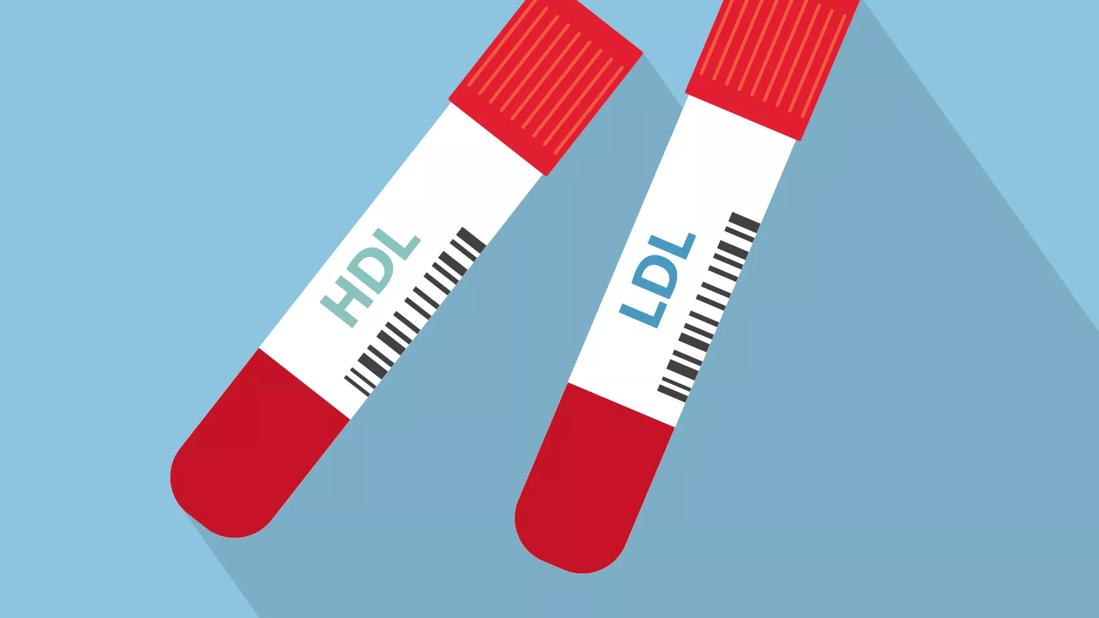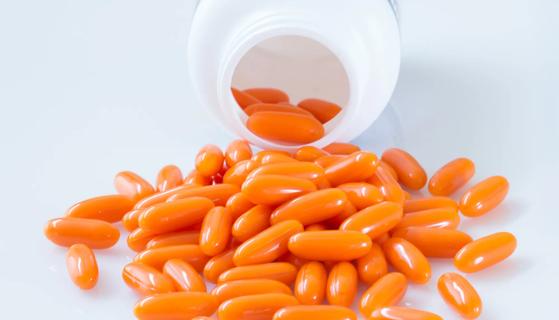Understanding the difference between ‘lousy’ and ‘healthy’ cholesterol can help you keep your heart healthy

“Cholesterol” is one of those words we all know but don’t actually know … you know? You’ve probably heard about good and bad cholesterol, as well as high and low cholesterol, but you may not be entirely sure what these terms actually mean when it comes down to your health.
Advertisement
Cleveland Clinic is a non-profit academic medical center. Advertising on our site helps support our mission. We do not endorse non-Cleveland Clinic products or services. Policy
Cardiologist Leslie Cho, MD, is here to help, outlining what you need to know about cholesterol in simple, easy-to-understand terms.
She explains that low-density lipoprotein (LDL), sometimes called “bad” cholesterol, causes fatty deposits to build up in your arteries. High-density lipoprotein (HDL), or “good” cholesterol, actually helps remove the bad cholesterol from your body.
Let’s get to the heart of the matter, shall we?
Dr. Cho lets you in on a little secret to help you remember which kind of cholesterol is which: “HDL is good cholesterol, so think H for happy,” she says. “The bad cholesterol is called LDL — L for lousy.”
LDL, the lousy stuff, causes plaque build-up in your blood vessels, which makes them hard and narrow. This then reduces or even blocks the flow of blood and oxygen that your heart needs, which can lead to:
Your HDL — the happy kind of cholesterol — does its best to save the day. “It goes around your body like a little vacuum cleaner, sucking out cholesterol from the blood vessels,” Dr. Cho explains.
It’s a little confusing that the good stuff and the bad stuff have such similar names. But try to remember that your happy cholesterol tries to clear a path so your lousy cholesterol can’t cause harm to your body.
Advertisement
Now that you know about these two types of cholesterol, here’s something else to keep in mind: When you hear about high and low cholesterol (as in high-cholesterol foods or ways to lower your cholesterol), those terms almost always refer to LDL, or the “bad” cholesterol.
To keep your body at its best, you want to have high levels of HDL and low levels of LDL. Think about it: You don’t want too much of the “bad” cholesterol, and you want high enough levels of the “good” cholesterol that it can do its job fighting off the bad stuff.
So, where should your cholesterol levels be? Dr. Cho weighs in.
Ideally, you want your “good” cholesterol levels to be at 60 mg/dL (milligrams per deciliter) or higher, though a standard range is 40 mg/dL to 59 mg/dL. When your HDL levels fall below 40, you’re at an increased risk for heart disease.
In rare cases, you may have very high levels of HDL that isn’t doing what it should be. “Some people have dysfunctional HDL,” Dr. Cho explains. “In this case, you have very high levels of good cholesterol, but it essentially goes around your body and does nothing.”
It’s important to keep this number low to reduce the risk of various health concerns associated with high cholesterol. And the sooner you start keeping an eye on this number, the better — one study shows that having high cholesterol from an early age increases your risks.
“When we’re born, our bad cholesterol is somewhere around 10, and as we get older, it continues to go up,” Dr. Cho shares. “When we look at epidemiological and genetic studies, we see that people with very high levels of LDL often go on to have heart attacks and strokes.”
Ideal LDL levels vary based on your age, sex and health conditions, but for the most part, here’s what to aim for:
A lipid panel is a blood test that measures your total cholesterol and breaks you’re your “good” and “bad” cholesterol levels (along with your triglycerides, another important piece of the cholesterol puzzle). In some cases, you’ll need to fast for 10 to 12 hours before this type of test, but non-fasting testing options are now increasingly available.
“It’s a simple, routine blood test,” Dr. Cho says. “A lot of people even get this type of blood test done at job screening health fairs.”
Advertisement
Your cholesterol levels should be tested every five years or so, starting at age 20. But if you’re considered high risk for heart disease or have other relevant health conditions, your doctor will want to test your levels more often.
There are lots of things you can do to better your cholesterol numbers.
To learn more from Dr. Cho about good and bad cholesterol, listen to our Health Essentials Podcast episode, “How to Lower Your Cholesterol.” New episodes of our Health Essentials Podcast publish every Wednesday.
Advertisement
Learn more about our editorial process.
Advertisement

Medications known as statins can lower cholesterol levels to minimize the risk of blocked arteries

Fatty fish, flaxseed, extra virgin olive oil and nuts may help raise your HDL number

Grapefruit contains natural chemical compounds that can interfere with certain medications when it’s consumed in large amounts

Up to 30% of people who take the cholesterol-lowering medication feel aches and soreness

There’s not enough evidence to show that this supplement has any effect on muscle aches from cholesterol-lowering meds

There’s no limit on the amount you should have each day, but experts are focused on saturated fat

Statin use has been associated with weight gain but the reasons aren’t clear — and the benefits of statins far outweigh the risks

Some statins have been shown to slightly increase your risk of diabetes — but that shouldn’t keep you from taking the medication you need

Babies can get congested easily, but you can calm their cough by keeping them hydrated, using nasal drops and running a humidifier

Weight loss may cause loose, sagging skin and muscle loss to your rear

Several conditions, like vitiligo and fungal infection, can cause a loss of pigmentation, leading to white spots or patches on your skin